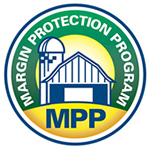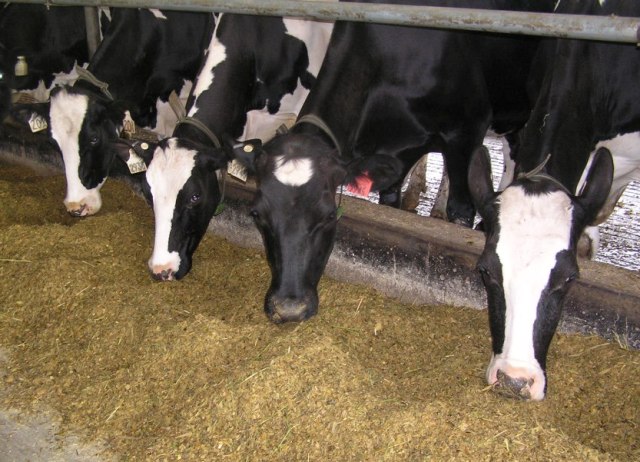The use, misuse, and growing ineffectiveness of antibiotics is one of the leading public health challenges of the 21st century. At the end of April, the
World Health Organization issued a report warning that society is about to enter into the “post-antibiotic” era, meaning that the successes of the past 75 years, of modern medicine using drugs to quickly cure bacterial illnesses and save lives, may not be repeated in the 21st century, due to the rise in bacteria resistant to antibiotics.
While a great deal of the media’s focus on the antibiotic problem relates to farm use, the reality is that the overwhelming rise in antibiotic resistant pathogens are in bacteria that have nothing to do with food animals – the real problem is with pathogens such as those responsible for tuberculosis, malaria, pneumonia, staph infections. It is human misuse, and especially infections acquired in the hospital setting, that are largely responsible for the growing antibiotic resistance problem.
But this is not to say that antibiotic use in agriculture should be ignored. As an industry, we in dairy have a long history of commitment to the proper use of antibiotics. Our long-standing partnership with the public health community – both federal and state – is in part responsible for the safety of the milk supply. Every drop of farm milk is tested for antibiotics, and in the rare instance where any antibiotic residue is found, that milk is dumped so that it never reaches the consumer.
That public health partnership, and our industry’s commitment to judicious antibiotic use, continues as we prepare for the U.S. Food and Drug Administration’s release – perhaps as soon as next month – of the results of a survey that looks at antibiotic use in the dairy sector. We don’t yet know the specific results, but NMPF and other stakeholders in the dairy industry are prepared to help explain the implications of the survey: what it demonstrates and, just as importantly, what it doesn’t. Since we are in an era where some clever marketers promote their milk as being “antibiotic-free” when, in reality, all milk is required to be free of antibiotics, this issue takes on added importance. Our hope is that the FDA report may actually help us tell a positive story about the proper role of antibiotics in dairy production.
More than five years ago, the FDA became concerned that a very small percentage of dairy operations may not have been using antibiotics prudently on their farms, based on residues identified by the USDA – not in milk, but in the meat and tissues of dairy cows headed for slaughter. The FDA theorized that farms with a tissue residue violation may also have farm management practices that could produce milk residues at the same time.
This thesis led the FDA to create a milk sampling survey comparing raw milk samples from roughly 900 dairy producers who had tissue residue violations, with a random group of 900 other farms. Each of those samples has been screened for the presence of 30 different drugs, including many drugs that are already routinely tested for by the government and by the dairy industry.
Even before the specific findings are known, it’s important to clarify that this report is not a comprehensive assessment of milk from across the U.S. dairy sector. Those 1,800 farms represent less than two percent of the dairy operations in America, and at just a single point in time – a tiny “snapshot” of the entire picture of the dairy industry.
Second, and even more importantly, the FDA’s survey is not an assessment of antibiotic traces in the retail dairy supply. All of the samples were collected pre-processing, meaning that the normal testing that each tanker load is subjected to when it reaches a processing plant hadn’t been performed on these samples. When tested at the plant, if there were commonly-used drugs present, the milk in these samples would subsequently have been rejected and dumped.
In fact, the FDA routinely tests Grade A, processed dairy products for penicillin and other classes of drugs. The good news is that in the past three years, not a single one of the nearly 130,000 retail-ready samples tested contained antibiotics. That’s a powerful and much broader set of data than what the FDA will be reporting through this special sampling survey.
What’s more, the trend line of residues in the farm milk supply has been heading down for many years, which is also confirmed by the FDA’s latest annual report on the nearly 3.2 million tests ran on tanker loads of milk prior to processing. Only 0.014% (14 thousandths of 1%) of all truckloads of raw milk (445 out of the 3.19 million) tested positive for antibiotics in 2013, down from 0.017% in 2012. This is the seventh year in a row that the figures have improved. And, again, the tanker loads of milk that tested positive were rejected and didn’t go into any products for consumers.
As we await the release of this latest report from FDA, we are confident that the federal government will reassert as part of its findings that the underlying safety and wholesomeness of the dairy supply is not in question. FDA has previously stated that it believes that the nation’s milk supply is safe. The findings of this report should not change that assessment.
The use of antibiotics in livestock is routinely criticized in some quarters. Those critics may try to use this new report as ammunition against farmers’ use of antibiotics – despite the fact that dairy farmers only use antibiotics for disease treatment. At the same time, the advent of this report, after two years of data collection and review, will lead to many teachable moments across the dairy sector, for farmers, and also for veterinarians and pharmaceutical companies.
In particular, we can and will use this as an opportunity to reinforce the need for the
2014 Residue Avoidance Manual, produced by NMPF and available free of charge. Ultimately, we are confident that the results will also serve to remind consumers that farmers work hard every day to produce a safe product.
 NMPF has sent a series of recommendations to the Agriculture Department on how to implement the new dairy safety net included the 2014 farm bill. The Margin Protection Program, or MPP, is a voluntary risk management plan that will address fluctuations in margins caused by high feed costs as well as low milk prices. NMPF was instrumental in the program’s enactment.
NMPF has sent a series of recommendations to the Agriculture Department on how to implement the new dairy safety net included the 2014 farm bill. The Margin Protection Program, or MPP, is a voluntary risk management plan that will address fluctuations in margins caused by high feed costs as well as low milk prices. NMPF was instrumental in the program’s enactment.  NMPF has sent a series of recommendations to the Agriculture Department on how to implement the new dairy safety net included the 2014 farm bill. The Margin Protection Program, or MPP, is a voluntary risk management plan that will address fluctuations in margins caused by high feed costs as well as low milk prices. NMPF was instrumental in the program’s enactment.
NMPF has sent a series of recommendations to the Agriculture Department on how to implement the new dairy safety net included the 2014 farm bill. The Margin Protection Program, or MPP, is a voluntary risk management plan that will address fluctuations in margins caused by high feed costs as well as low milk prices. NMPF was instrumental in the program’s enactment. 

 April was another strong month for Cooperatives Working Together, with the program helping cooperatives sell 28 million pounds of dairy products overseas. Nearly 140 requests for export assistance were received, and of those, 86 were accepted during last month. Of the 86 bids accepted, 36 involved cheese totaling 10.9 million pounds; 27 involved butter totaling 12.7 million pounds; and 23 involved whole milk powder totaling 4.4 million pounds.
April was another strong month for Cooperatives Working Together, with the program helping cooperatives sell 28 million pounds of dairy products overseas. Nearly 140 requests for export assistance were received, and of those, 86 were accepted during last month. Of the 86 bids accepted, 36 involved cheese totaling 10.9 million pounds; 27 involved butter totaling 12.7 million pounds; and 23 involved whole milk powder totaling 4.4 million pounds. A new report from the Obama administration calls out as a trade barrier the European Union’s efforts to prevent the U.S. dairy industry from using common cheese names.
A new report from the Obama administration calls out as a trade barrier the European Union’s efforts to prevent the U.S. dairy industry from using common cheese names.  Confirming what the dairy industry has said for years, a Cornell University study found that banning flavored milk from school cafeterias can trigger unintended consequences that outweigh any potential benefits from reduced sugar consumption.
Confirming what the dairy industry has said for years, a Cornell University study found that banning flavored milk from school cafeterias can trigger unintended consequences that outweigh any potential benefits from reduced sugar consumption.  Genetically modified food ingredients and opportunities and challenges in the Middle Eastern and North African markets were among the topics discussed at the 15th joint conference of the American Butter Institute and the American Dairy Products Institute. Held at the Hyatt Regency Chicago in late April, the 2 ½-day meeting attracted more than 900 attendees.
Genetically modified food ingredients and opportunities and challenges in the Middle Eastern and North African markets were among the topics discussed at the 15th joint conference of the American Butter Institute and the American Dairy Products Institute. Held at the Hyatt Regency Chicago in late April, the 2 ½-day meeting attracted more than 900 attendees. 




